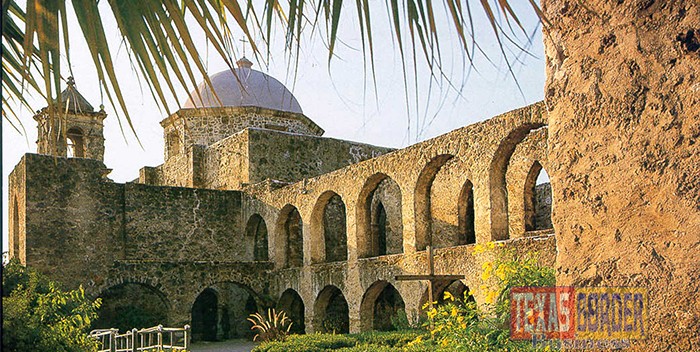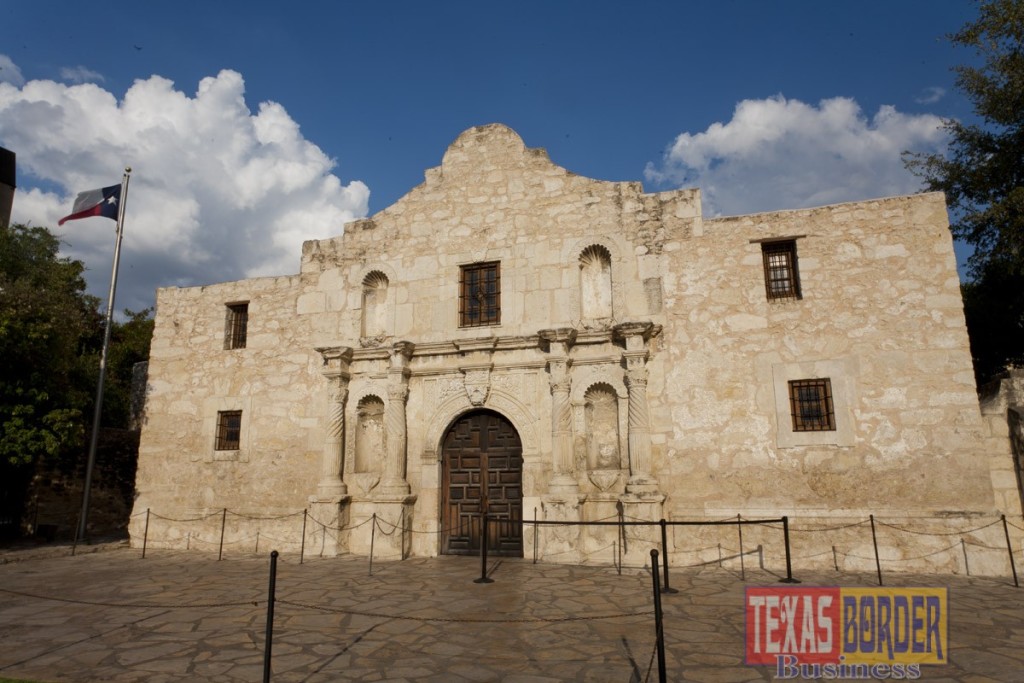
Texas Border Business
Remember the Alamo! 23rd Site for the U.S. and First for Texas
SAN ANTONIO, TX, July 5, 2015 – The wait is finally over: The San Antonio Missions have officially been designated a UNESCO World Heritage Site. The decision was announced on July 5th at the annual UNESCO World Heritage committee meeting in Bonn, Germany. An elite list with just 22 existing U.S. landmarks included, the five Missions (including The Alamo) are taking their place among other great American historic and cultural institutions like the Statue of Liberty and Independence Hall, in addition to natural treasures such as the Grand Canyon and world wonders like the Great Wall of China. The Missions, which are the largest collection of the Spanish colonial architecture in the U.S., are the third designation in the country in the last 20 years.
San Antonio’s Missions symbolize an era when the world was expanding, cultures were intertwining, and the global landscape was forever changed. It’s time now to “Remember the Alamo,” the first San Antonio Mission.
“The United States has a powerful and valuable history that encompasses a wide range of peoples, creeds and experiences,” said Crystal Nix-Hines, U.S. ambassador and permanent representative to UNESCO. “The San Antonio Missions represent an important element of our story, and a World Heritage designation allows them to be shared not only within the U.S. but also the wider global community.”
Susan Snow, archeologist for San Antonio Missions National Historical Park who has been coordinating the community efforts to secure UNESCO World Heritage status since 2007, said, “The San Antonio Missions are a tangible representation of everything required for a functioning Spanish colonial mission system, all within a short trek along the San Antonio River. These Missions are a living example of the interchange of cultures bringing together the indigenous, Spanish, Mexican, and other influences that form South Texas today. The resulting cross-cultural exchange is the very essence of the great melting pot of the United States.”
“San Antonio has grown to become the nation’s seventh-largest city while preserving the iconic history upon which it was built,” said Casandra Matej, Executive Director of the San Antonio Convention & Visitors Bureau. “Treasures like The Missions set us apart as an authentic destination, and now with World Heritage status, we are provided a tremendous opportunity to bring even more awareness, visitors and business to our city.”

Major Economic Impact
A UNESCO designation is a catalyst for socio-economic change, with increased visitation and tourist spending. According to the U.S. Travel Association, $928 billion was generated by domestic and international travelers in 2014, placing tourism as one of our nation’s largest economic generators and spurring an additional $1.2 trillion in other industries.
For San Antonio, the impact will be even more significant, as tourism is one of the city’s top five industries, providing one in eight jobs and more than $12 billion annually. By 2025, the World Heritage Site economic impact on San Antonio and Bexar County is expected to generate an additional $44 million -$105 million in economic activity, with over 1,100 newly created jobs.
History of the Missions
As the largest collection of Spanish colonial architecture in the U.S., Mission Concepción, Mission San José, Mission San Juan, Mission Espada and Mission San Antonio de Valero (The Alamo) were built in the early 1700s to convert Native Americans to Christianity and help settle this region under the flag of Spain.
Straddling either side of the spring-fed San Antonio River, the five Missions are uniquely close to one another, spanning just over seven miles. They proved critical to Texas’ iconic history and heritage, shaping the San Antonio landscape with their acequias, farmfields, ranchlands, and compounds. Indigenous people and people from around the empire of New Spain were brought together to share technologies, art and cultures. The Missions continued to play an important role in early Mexican history and in the struggle for Texas independence. These contributions are still seen in the modern layout of the streets and neighborhoods of San Antonio.
The Missions survived for decades, creating a distinctive culture that blended native traditions with newly adopted Spanish ways. Communally, they have shaped the personality of San Antonio, now the nation’s seventh-largest city, as a melting pot of Latino, Native American and Western cultures.
The Mission Experience Today
As protected historic sites, the Missions host millions of visitors each year. All except The Alamo are still active Catholic parishes, some with descendants of the original congregants.
Whether a visitor is interested in attending a mariachi mass, hiking from Mission to Mission or simply enjoying a self-guided tour, there are many ways to immerse oneself in the days and influences of colonial Spain.
- Mission Reach River Walk: The Missions are now linked by the newly expanded River Walk, a network of garden-bordered paths along the San Antonio River that connect much of the city’s history with hotels, restaurants, theaters and more. Following a recent $358 million renovation extending it from three to 15 miles, guests have the opportunity to hike or bike from Mission to Mission as well as kayak certain sections of the river.
- A Tour 300 Years in the Making: With their limestone facades and picturesque bell towers, the Missions bring to life a bygone era. All are open to the public free of charge. Tours allow visitors to walk the historic grounds and explore living quarters and churches, while hearing centuries-old stories from studied park rangers.
- Museum & Award-Winning Film: Mission San José, often referred to as the “Queen of the Missions,” provides an ideal starting point. Its museum exhibits artifacts that explain the diverse tasks found within the Spanish missions. An on-site theater shows the award-winning film Gente de Razón, which tells the story of the native people of 18th-century South Texas, their role in colonizing New Spain and the impact of the Spanish Missions.














